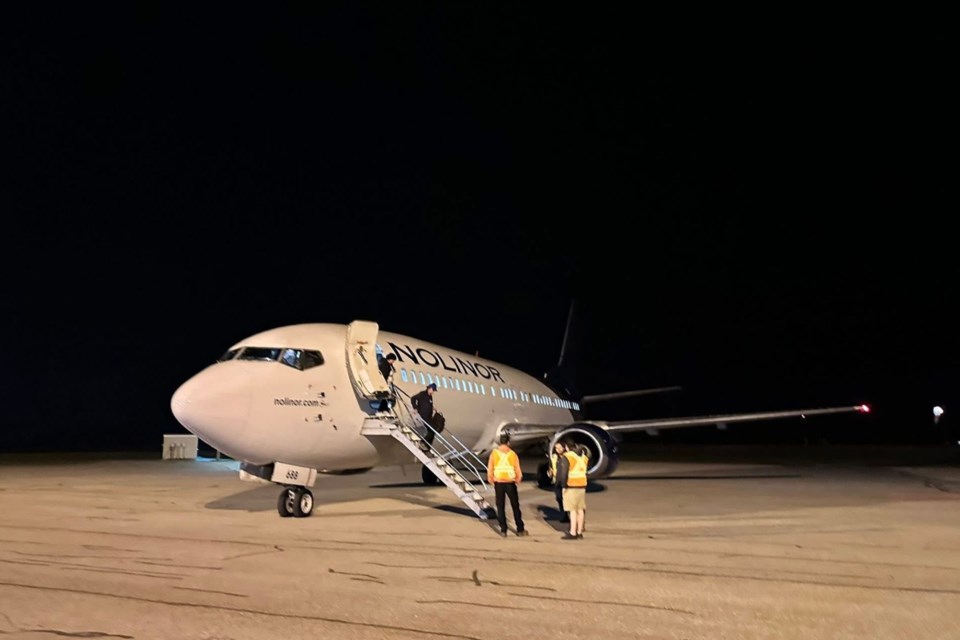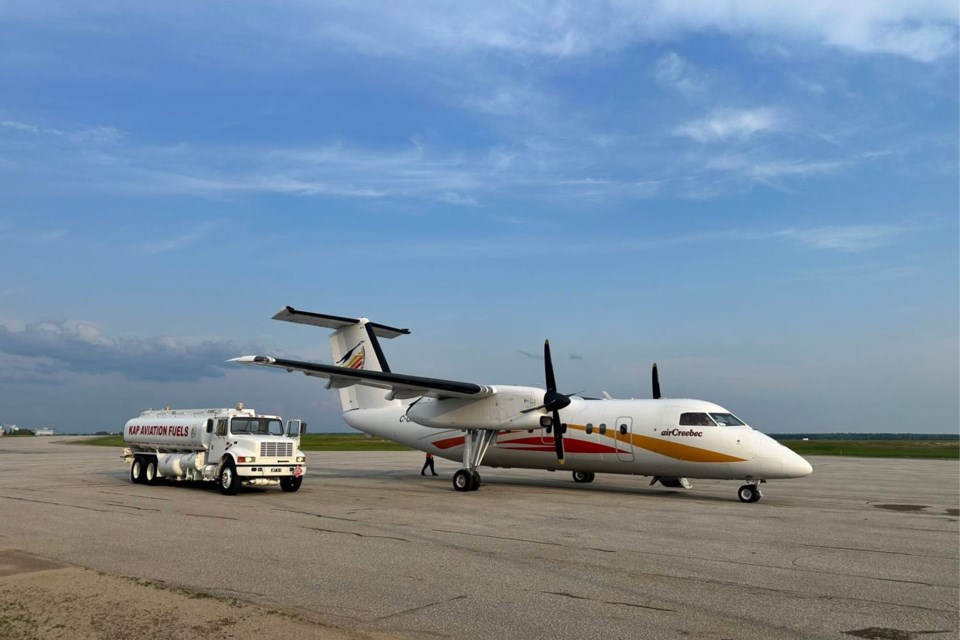KAPUSKASING — When the wildfires got too close, hundreds of people from Sandy Lake First Nation had no choice but to leave everything behind.
In Kapuskasing, they were met by a team that knows exactly what that feels like.
Creemergency — a partnership between Kashechewan First Nation and the O’Briens Group – was activated on June 8 to help manage the influx of people from Sandy Lake First Nation, where wildfires have forced evacuations.
Within hours, the team was welcoming the first flights and working into the early morning to ensure everyone arriving had what they needed. Over 400 residents from the northwestern Ontario community are in Kapuskasing.
“We provide a full wraparound service for evacuees,” said Creemergency CEO Tyson Wesley.
“Bus shuttles, meals, security, clear communication with their leadership. We’re here to accommodate their needs.”

Evacuees are also being housed in nearby Smooth Rock Falls, where residents are rallying to collect donations.
Wesley grew up in Kashechewan First Nation and has experienced more than 10 evacuations due to flooding. He said that history is what drives the team’s approach today.
“Kashechewan has been evacuated so many times. We understand the whole process. We understand the stress that comes with leaving your home in such short notice,” he said.
“There’s a lot of respect and dignity that goes into managing this kind of evacuation. We’ve done it so long, we’ve built up these skills, and now we’re using them to help other First Nations communities.”
The Sandy Lake evacuation is just the latest in a growing number of climate-driven emergencies that have overwhelmed provincial and federal systems, Wesley said. He added that Creemergency was brought into action partly because larger centres in Ontario and Manitoba were already at capacity.
“We’ve developed a strong relationship with the O’Briens Group over many years,” Wesley said.
“They helped us during our evacuations, and now we’ve built this formal company to support other First Nations. We know our people, our customs, our languages. We are First Nations people helping First Nations people.”

While Creemergency provides day-to-day care, such as food and transportation, Wesley believes much more needs to be done at the federal level to improve the evacuation experience.
He pointed to the lack of funding for things like recreational programming and culturally appropriate spaces for children, youth, and families during prolonged displacement.
“My cousin was sent to Toronto with their 10 children. They were stuck in a hotel room for six weeks. That’s not a comfortable or sustainable situation. Safety is the priority, yes, but we also need to think about people’s well-being,” Wesley said.
“We need to move away from cost-saving and toward making evacuations more humane and dignified.”
Wesley also stressed the importance of investing in preventative measures, like brush clearing for fire lines, and emergency preparedness programs for remote communities, disasters are becoming more frequent and unpredictable.
“In Kashechewan, we still use traditional knowledge to assess risks, but even that can’t keep up with how fast things are changing,” he said.
“This is just the start. We want Creemergency to be a model, not just in Ontario, but across Canada, so that more First Nations have the support they need when disaster strikes.”
Creemergency was officially established in 2024, but it is the result of decades of lived experience, Wesley said.
As the team continues to support Sandy Lake evacuees in Kapuskasing, Wesley said their mission is simple: “We’re here to serve our people, using our people.”
